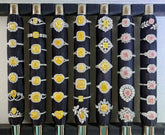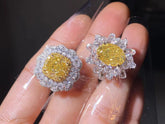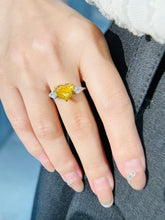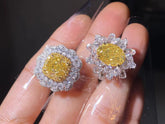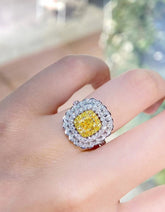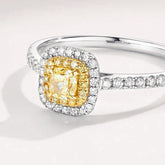Science Popularization | How to differentiate between natural diamonds and laboratory-grown diamonds?

Lab-grown CVD diamond rough (left), lab-grown HPHT diamond rough (center), and natural diamond rough (right)
Two faceted samples of crystalline carbon - both as clear as crystal, displaying a myriad of colors under direct light. They appear entirely identical. However, one has a history of over a billion years, while the other was recently cultivated in a laboratory.
Of course, both are diamonds. The first was naturally formed deep within the Earth's mantle in the early stages of Earth's formation. The second originates from a laboratory, possessing chemical, physical, and optical properties that are essentially identical to natural diamonds.
According to the Federal Trade Commission (FTC), a diamond - a material rather than a gemstone - is a mineral composed of 'pure carbon crystallized in the isometric system,' and the organization sets trade guidelines for the gem and jewelry industry.
Although the FTC states that diamonds are essentially pure carbon, most natural diamonds contain trace amounts of other substances, particularly nitrogen, which can cause diamonds to appear yellow, or in rare cases, boron, which can give diamonds a blue hue. Additionally, diamonds typically contain inclusions, tiny foreign objects that were trapped within the diamond as it was forming millions of years ago.
About five years ago, laboratory-grown diamonds (sometimes also referred to as synthetic or cultured diamonds) began to enter the gem and jewelry market in large quantities. While laboratory-grown diamonds appear visually identical to natural diamonds, there are subtle differences between them that can only be detected by professionally trained gemologists using specialized equipment designed for identification.

Comparison of diamond crystals: a 0.83-carat natural diamond crystal (left) and a 1.02-carat HPHT crystal (right). Both crystals are from the GIA Research Collection. Photograph by Orsasa Weldon/GIA.
Where do diamonds come from?
Natural Diamonds
Natural diamonds formed deep within the Earth's crust under extreme heat and pressure as early as 3 billion years ago. Volcanic activity brought them to the surfae, where they are found in a type of volcanic rock called kimberlite pipes, waiting to be mined. Only about 5% of kimberlite pipes contain enough diamonds to make their mining economically viable.

Lab-Grown Diamonds
In the 1950s, industrial-quality synthetic diamonds suitable for industrial use were first produced in the laboratory. Although gem-quality diamonds were first produced in the lab in 1971, it wasn't until the first decade of the 21st century that colorless lab-grown diamonds began to enter the gem and jewelry market in large quantities.
Dr. James Shigley, a distinguished research fellow at GIA who has been involved in lab-grown diamond research for over 30 years, states that there are two main methods used to create lab-grown diamonds.
High Pressure High Temperature (HPHT) diamonds are produced by creating high pressure and high temperature conditions in the lab, mimicking the conditions under which natural diamonds form deep within the Earth. This process produces uniquely shaped lab-grown diamond crystals.
Chemical Vapor Deposition (CVD) involves decomposing a carbon-rich gas, such as methane, into carbon and hydrogen atoms, which are then deposited on a diamond seed to grow flat, square-shaped diamond crystals.
Regardless of the method used to create diamonds, most sizes typically require at least a month to grow. Most CVD-grown diamonds require additional treatment methods, such as heating or irradiation, to improve or alter the diamond's color after the manufacturing process is completed.
Lab-grown diamonds are typically below one carat in weight, but larger gemstones have appeared on the market as technology and techniques improve.

HPHT (High Pressure High Temperature) presses are housed in factories capable of producing gem-quality diamonds in various sizes.
How to differentiate between natural diamonds and laboratory-grown diamonds?
It is crucial to identify laboratory-grown diamonds as consumers need to know what they are buying, especially considering the significant price difference between lab-grown and natural gemstones.

Because the chemical and optical properties of lab-grown diamonds are nearly identical to natural diamonds, traditional gemological observations and old-style 'diamond testers' cannot detect the difference. The only reliable way to distinguish between lab-grown and natural diamonds is through identification in a professional gemological laboratory or using precision equipment developed by organizations like GIA and others.
Diamond Morphology - Telltale Signs
'Natural diamonds formed millions of years ago deep inside the Earth exhibit significantly different growth characteristics from diamonds grown in a laboratory over a few weeks. Additionally, HPHT and CVD-grown diamonds have different growth morphologies, and the conditions of growth affect the way diamond crystals shape,' said Dr. Shigley.

This diagram shows different diamond rough based on growth method or morphology. While diamonds lose this shape after cutting and polishing, their identification can still be confirmed by looking for fluorescence patterns caused by the unique growth morphology in other substances.
Dr. Sally Eaton-Magaña, Senior Research Scientist at GIA, further explains, 'The identification criteria used for HPHT and CVD diamonds are completely different.' He adds, 'Over the past 10-15 years, laboratory-grown diamonds have become increasingly diverse, requiring GIA researchers to keep pace with new technological developments.'
'We also conduct regular research on new products, and GIA has plans for laboratory-grown diamonds to ensure that we continue to lead in new trends,' Dr. Eaton-Magaña said.
Source: GIA
Summary of FAQs:
-
What are laboratory-grown diamonds?
- They are diamonds cultivated in a laboratory setting, possessing identical properties to natural diamonds but with a different origin.
-
How do natural and lab-grown diamonds differ?
- Natural diamonds form deep within the Earth's crust over billions of years, while lab-grown diamonds are produced in controlled lab environments over weeks.
-
How are lab-grown diamonds created?
- They are produced using methods like High Pressure High Temperature (HPHT) or Chemical Vapor Deposition (CVD) to replicate natural diamond formation conditions.
-
What methods can differentiate between natural and lab-grown diamonds?
- Traditional gemological observations and diamond testers are insufficient. Professional gemological labs and specialized equipment like those from GIA are necessary for accurate identification.
-
What are some telltale signs of lab-grown diamonds?
- Differences in growth morphology between natural and lab-grown diamonds can be observed, especially under fluorescence patterns caused by unique growth conditions.
-
How has the diversity of lab-grown diamonds evolved?
- Over time, laboratory-grown diamonds have become more diverse, requiring ongoing research and development to stay ahead of emerging trends in their production and identification.
———— / END / ————
